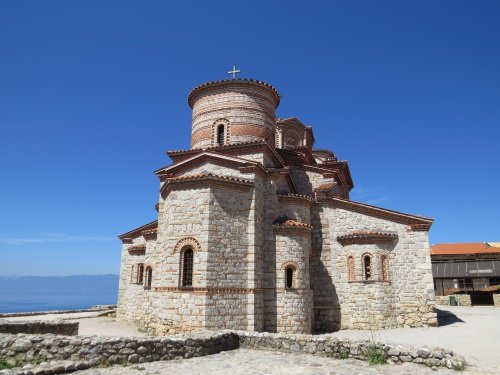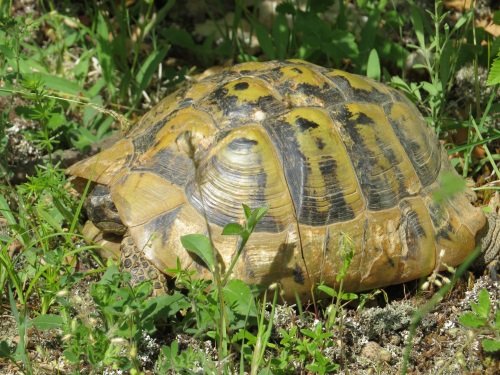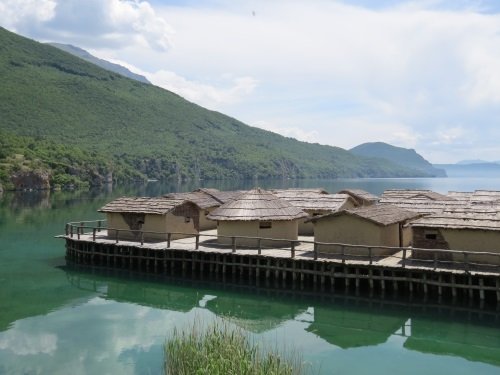The “
Natural and cultural heritage of the Ohrid Region
” spans a large area in and around the Macedonian side of Lake Ohrid. The Republic of Macedonia owns about two-thirds of the lake, the remaining third is on Albania’s Tentative List as a
transboundary extension
. The site includes the lake, towns at the lake shore (such as Struga, Pestani, Trpejca and of course Ohrid itself), and also single monasteries like Sveti Stefan and Sveti Naum. And it encompasses a part of Galičica National Park - a protected natural area that covers the mountains surrounding the lake on the Macedonian side.

|
|
Saint Panteleimon monastery
|
I spent 3 nights in the town of Ohrid, and had 2 full days to explore. On my first day I ‘did’ the cultural circuit in Ohrid itself. First the short hike to the lovely Church of St. John at Kaneo. And then uphill to the archaeological site of Plaošnik. This was a big surprise: about half of the area is subject to archaeological survey or under construction for who knows what. The church of Saint Panteleimon itself is an ‘instoration’ – it was almost completely rebuilt (using the old materials) over the last years under the watchful eyes of ICOMOS. The result is too brand new to my taste, but it still is the most sacred place of the Macedonian Orthodox Church. The mosaics of the old basilica on the same grounds are worth a visit though.
I did see many more churches, icons and related objects, but overall I found Ohrid a very sanitized and touristy town, I had expected something with more spirituality given the number of its churches. However it would be the perfect destination if you like to spend your holiday with Dutch pensioners: it’s very cheap, a week in a hotel including flights from Amsterdam and transfers can already be had for 250 EUR in the low season. You’ll also often encounter signs such as “Hier spreekt men Nederlands” (
Dutch is spoken here
) in restaurants and shops.

|
|
Hermann's tortoise in Galicica National Park
|
On my second day I checked out the natural side to this WHS. I arranged for a taxi to bring me to the village of Elsani, about half way up the mountains above Lake Ohrid. From there, several hiking paths are possible through Galičica National Park. I choose the one descending to the coastal town of Pestani. It was a very enjoyable and relatively easy walk of 5.2 km. Only at the end I encountered two other hikers. The only slight problem is the signage, but fortunately I had read up before and learned that if you don’t see red-and-white stripes anymore for 50 metres, you’re on the wrong path. So I kept very focused on the stones and treetrunks mostly low to the ground. That way I was able to find a wild tortoise which I otherwise would have missed.
After the hike I walked on along the coast for a km or 2 to see the ‘
Museum on Water - Bay of the Bones
’. Because, you’d never guess, Lake Ohrid had its prehistoric pile dwellers too! The reconstructed houses on a platform are based on the underwater site found nearby. This site is mentioned in the comparative analysis of the
Alpine Pile Dwellings WHS
, it says that they only recently have been evaluated by modern methods in underwater excavations and that they cannot yet be fully assessed.

|
|
Bay of the Bones
|
Ohrid is Macedonia’s only WHS to date, and probably its only full-blown tourist attraction. In total I spent 6 days in this small country, visiting also the
statue frenzy of Skopje
and the
TWHS of Kokino
. Somehow I did not warm up to it, I was missing the positive vibe of neighbouring Albania.



